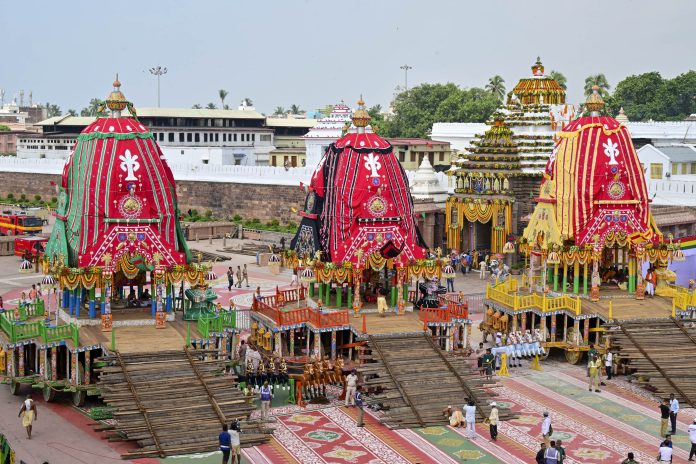PUIR, Sep 22 : The ground penetrating radar(GPR) survey being conducted by the National Geophysical Research Institute (GPRI), Hyderabad of the Ratna Bhandra of the Sri Jagannath temple was completed on Sunday.
The initial plan was to complete the survey by September 23, but it concluded Sunday.
GPR specialist Anand Pandey who has been leading the NGRI team of engineers and technocrats told the media that the team has taken dimension-wise (horizontal and vertical) pictures of the entire Ratna Bhandar.
It took pictures including floors and walls using three GPR cameras having 200, 400, and 900 frequencies with the capacity to penetrate ten meters down the floor.
The data, he said, will be processed in the lab and then synchronized into full images, adding that it will be further analysed in seven phases.
The report will be presented to the Archaeological Survey of India (ASI) which will submit it to the Sri Jagannath temple administration for further action, Pandey told the media.
Earlier on September 18 the laser scanning of both the Ratna Bhandars was conducted by the CSIR in the presence of the Ratna Bhandar committee.
Their work remained inconclusive and the team preferred a detailed GPRS survey of the entire structure.
Accordingly, after receiving clearance from the state government, the Jagannath temple administration approached the ASI to conduct the survey and complete the work before September 24 as the Dashara Sholapuja is scheduled to begin on September 26.
In response to the request of the temple administration, ASI agreed and informed the temple that the GPRS survey would be conducted from September 21 to 23 for which the administration obtained the standard operation procedure (SOP) from the state government.
The work began on Saturday and the daily rituals of the deities were rescheduled and the darshan of the deities remained closed for devotees from 1 pm to 6 pm while priests performed rituals without any disturbance.
The state government handed over Ratna Bhandara to the ASI to conduct repairs and conservation work
There was a growing demand to look for concealed and hidden compartments and tunnels in both the Ratna Bhandars which were possibly made to protect the lord”s treasure from invaders.
Even the Gajapati Dibyasingha Deb, the chairman of the temple managing committee voiced in favour of a detailed inspection of the Ratna Bhandars of the temple.
The temple administration approached the ASI for a thorough inspection and survey of the Ratna Bhandars.
The Bhitar ratna bhandar (inner treasury ) door was opened after a lapse of nearly 46 years by a committee headed by Justice Biswanath Rath.
All the ornaments and jewellery from Bahar and Bhitar Ratna Bhandars were shifted in tight security to two separate temporary strong rooms inside the temple in July while all empty chests and containers were removed to facilitate inspection and survey by the ASI-led teams.
After this phase, the ASI will carry out the repair and conservation work.
In the final phase, all the wealth will again be brought back to the Ratna Bhandar where the fresh inventory of the wealth will be made and then compared with the inventory made in 1978.
ASI has been entrusted by the state government to conduct repairs and conservation of this twelfth-century temple since 1974.
Sri Jagannath temple Chief Administrator Arabind Padhi told the media that from September 23 ,the normal schedule of the deities including the darshan of the Trinity by devotees will be resumed. (UNI)


